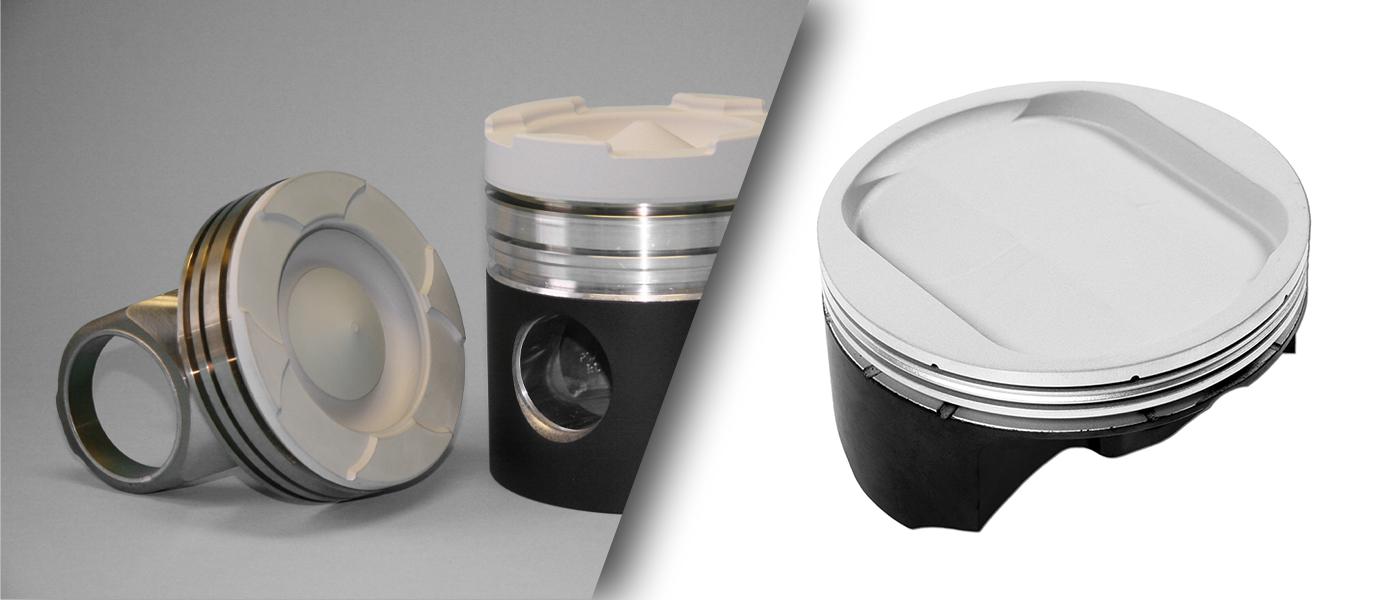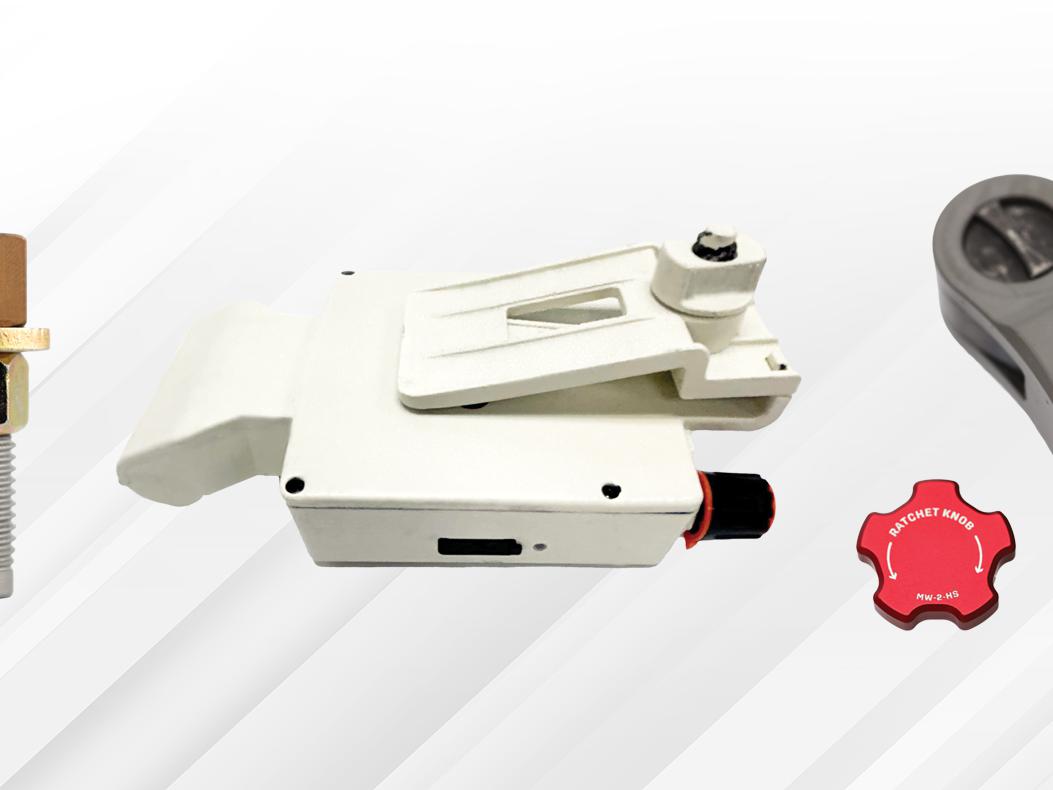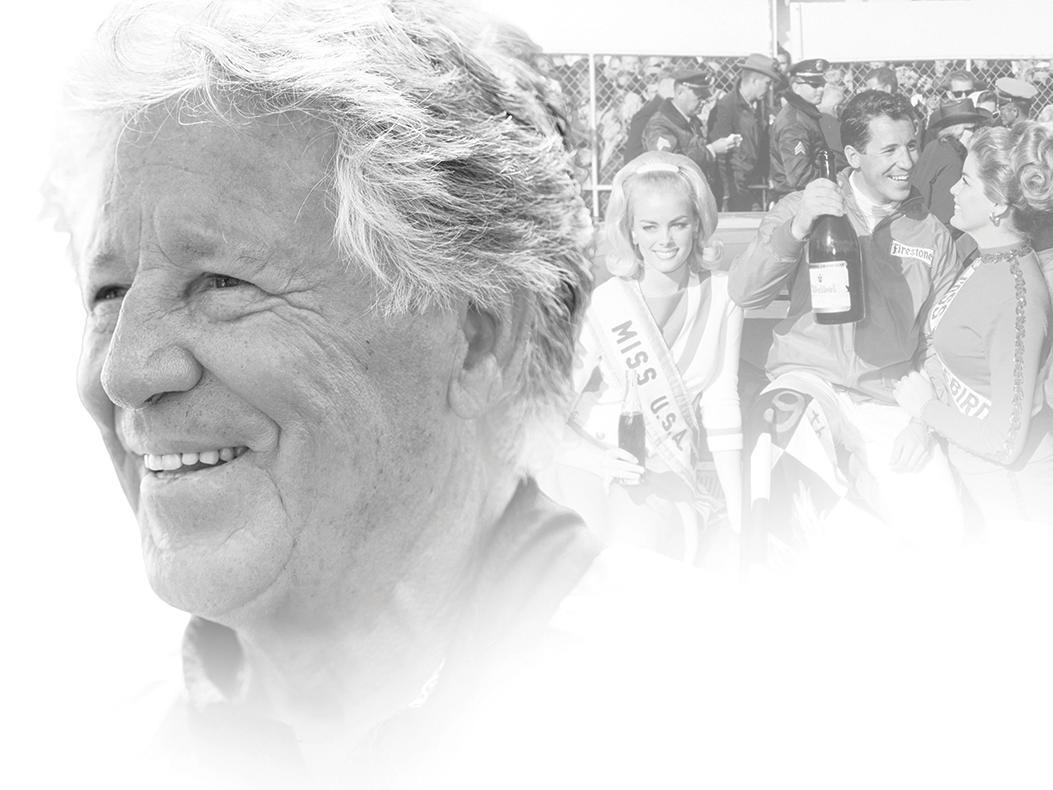Make The Case: Piston Coatings

When it comes to pistons, it’s no secret that friction and heat can affect performance and overall longevity. In this month’s column, Swain Tech’s Richard Tucker and Gary Huffman of Calico Technologies explain how their respective race-ready piston coatings are designed to stack the odds in your favor.
TBC & PC-9 ADVOCATE:
RICHARD TUCKER,
SWAIN TECH
–
Decades ago, one of the key benefits of using piston coatings was the ability to run higher clearances and pick up horsepower as a result. While that’s still true today, clearances are much better now than they were in, say, the early 1980s, and power is a lot easier to come by through other means. These days it’s more about adding an extra level of protection—an insurance policy in case things go wrong and there’s an unusual surge of heat—to either prevent a catastrophic failure or reduce the potential damage done by that event.
In a motorsports application, we’d address this with two different coatings: Our TBC (Thermal Barrier Coating) for the dome of the piston, and our PC-9 (Performance Coating #9) for the skirt of the piston.
Any time we’re dealing with heat, we’re going to use ceramic-based products to manage it. TBC is a reflective coating that is going to be thin and uniform so that it will be an effective thermal barrier, but not so effective that it traps too much heat in that dome surface—if it did, it would promote detonation rather than discouraging it.
We have industrial ceramics that are very effective at blocking heat, but the problem is that when you use it in a motor, it blocks too much heat and actually traps it right on the surface. There’s a balance between the two, and TBC was developed to be a “plug and play” solution that doesn’t require you to make clearances for your valves and reshape your combustion chamber to accommodate it.

And with the piston skirt, wet lubricants are always going to do the primary work. So the main purpose of that PC-9 coating is to provide a backup form of lubrication to help in “what if” situations: oil starvation, lean conditions—anything that has the potential to make that piston grow larger than it should and want to stick. This will provide some more protection for a little bit of extra time to mitigate bigger problems.
Other folks use a hard-anodizing process to address this, particularly in the drag racing world, and that treatment is applied to the entire piston. That’s certainly an acceptable way to help protect that skirt in those types of applications, where they’re pulling those pistons out of the engine regularly for servicing.
But the downside is that the hard-anodizing process makes the skirt hard, so you’re going to notice problems between the skirt and the wall. So if you’re not taking the motor apart regularly, you probably don’t want to use that hard-anodized process. You want the skirt to be softer than the cylinder wall.
Hard anodizing is providing wear resistance by making the skirt hard, and that’s great for those really demanding applications where you’re just running for a few seconds at high load and checking the piston skirts and cylinder walls regularly. The challenge is that, over a long period of time, you might be doing a great deal of damage to the cylinder wall.
PC-9 is on the opposite end of the spectrum from hard anodizing—it’s a durable coating, but it’s intentionally soft so that when things are too tight, it acts as a sacrificial surface. It’s generally preferable for the skirt and the coating to be the wear surfaces rather than the cylinder wall.
CT-3 & CT-2 ADVOCATE:
GARY HUFFMAN,
CALICO TECHNOLOGIES
–
In a perfect world you wouldn’t have a lot of loading on a piston skirt, but in this world, we do. Pistons are designed with cams on the skirts in order to minimize the contact between the skirt and the cylinder in the load area, but at the end of the day there’s still a significant amount of contact, and that’s the largest metal-on-metal frictional area in the motor. So it stands to reason that when you’re looking to reduce friction and heat in the motor, you’re going to want to reduce friction at the largest frictional point in the motor. That’s probably the biggest advantage that piston coatings can provide.
For that reason, our CT-3 dry film lubricant coating is great for a wide range of motorsports applications. It’s a graphite blend—any time you’re looking for anti-scuffing properties, you’re going to want to use something with graphite in it because of its lubricity. Molybdenum disulfide coating is also very popular in the racing world for the same reason, and it’s very slick as well.
The reduction in friction that the CT-3 coating provides reduces heat in turn—when you rub two pieces of metal together, you create a lot of heat. By using a skirt coating, you’re going to reduce overall engine temperature and ultimately save money because the wear will be on the coating rather than the cam on the piston skirt.

The coating is a sacrificial layer, and it’s going to conform to the cylinder bore to some degree. But typically, when you pull a coated piston out of a motor that hasn’t reached its cycle life, it can be recoated and reused. When most “Saturday night” motors are torn down for rebuilds, the coated pistons can be reused. And a lot of guys do just that.
We also tailor our CT-3 coating to specific applications. In reality it’s an entire family of coatings, and we adjust the chemical blend of it based on the needs of each application. For instance, a four-cylinder, turbocharged, nitrous-injected 600-horsepower drag engine requires a very specific CT-3 coating blend—it comes down to criteria like the expected rpm range, power adders, and the type of fuel you’re using.
Managing heat is also crucial in a high-performance motor, as it allows the tuning to go places it wouldn’t be able to go otherwise. That’s why we also, strongly recommend applying a thermal top coating like CT-2. Like the CT-3 coating, it’s focused on managing the heat in the piston, the only difference is that we’re using a ceramic blend.
Not only does CT-2 reduce heat in the piston overall, it also keeps heat off of the pin bore, and that’s a big problem area in a lot of motors because you generally want to run your pin bores as tight as you can. It also keeps heat off of that top ring, which is very important—you want to do anything you can to reduce heat on the ring package. Anyone who’s racing in a class that allows ceramic top-coated pistons should be running them.
 MEMBERSHIP LOGIN
MEMBERSHIP LOGIN JOIN PRI
JOIN PRI


